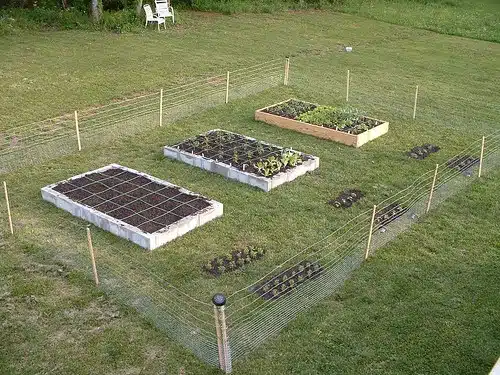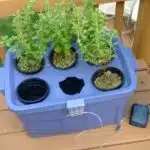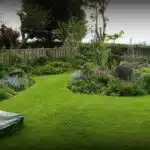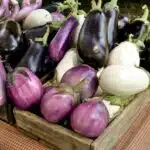Square foot gardening is a plant cultivation technique that involves dividing a garden into small square areas, each typically measuring one square foot. This method of gardening has become popular in recent years due to its ability to produce high yields of crops in minimal space. The benefits of this type of gardening include the efficient use of space, reduced water usage, and less maintenance compared to traditional gardening methods.
If you are interested in planning a square foot garden, there are several factors to consider before planting your first crop. These factors include selecting the right location, determining which plants will thrive in your area, and deciding on the appropriate size for your garden. In this article, we will explore these considerations in detail and provide tips on how to plan a successful square foot garden that will provide an abundance of fresh produce for you and your loved ones.
Understanding The Basics Of Square Foot Gardening
If you’re tired of your garden looking like a chaotic mess and want to try a more organized method, look no further than square foot gardening. This system involves dividing your garden into small, neat squares that each house a specific plant or crop. It’s an efficient way to grow a variety of produce in a limited space, and it can also be visually appealing.
Before you start planning your square foot garden, there are a few basics to understand. First, decide on the size of your garden bed. A 4×4 square is a good starting point for beginners, but you can adjust the size based on your available space and needs. Next, think about planning strategies that work best for you. Some gardeners prefer to group plants by type or season, while others focus on companion planting or staggered harvesting.
Crop rotation is another important consideration when planning your square foot garden. By rotating crops every year, you can prevent soil-borne diseases and improve soil fertility. For example, if you grew tomatoes in one square this year, plant beans or peas in that same spot next year. This helps maintain the overall health of your garden and ensures that each plant has access to the nutrients it needs to thrive.
Benefits Of Square Foot Gardening
Square foot gardening has become increasingly popular due to its numerous benefits. One of the most significant advantages is the community benefits that come along with it. Square foot gardens can be implemented in urban areas where there is limited space, enabling individuals to grow their own food and reducing their reliance on long supply chains. This not only promotes healthy eating but also creates a sense of community as neighbors can share their produce, resulting in a stronger bond among residents.
Moreover, square foot gardening has a positive economic impact on individuals and the society at large. It reduces the cost of purchasing groceries while increasing access to fresh, organic produce. This is particularly advantageous for low-income families who may not have access to fresh fruits and vegetables due to financial constraints. Furthermore, it supports local businesses by providing an avenue for farmers’ markets where vendors can sell their produce directly to consumers.
In conclusion, square foot gardening offers numerous benefits that extend beyond personal satisfaction and convenience. It fosters community development by promoting healthy eating habits and providing an opportunity for social interaction among neighbors. Additionally, it has significant economic implications by increasing access to affordable fresh produce and supporting local businesses. In the next section, we will discuss how selecting the right location for your garden is crucial for its success.
Selecting The Right Location For Your Garden
- When selecting the right location for a garden, the most important factor is to consider the amount of sun exposure it will receive.
- A spot that receives direct sunlight for a majority of the day is ideal for most plants.
- The amount of sun exposure should be considered in relation to the type of plants being grown.
- Areas that are protected from strong winds, excessive moisture, and animals are also important factors when choosing a spot for a garden.
Choosing A Spot
When planning a square foot garden, selecting the right location is crucial to ensure the success of your crops. The first consideration when choosing a spot for your garden should be sun exposure. Your plants need at least six hours of direct sunlight each day to thrive and produce a good harvest. Observe your potential garden location throughout the day to determine which areas receive the most sunlight and choose a spot that meets this requirement.
Another important factor to consider when selecting the right location for your garden is drainage. Poorly drained soil can lead to root rot and other diseases that can damage or even kill your plants. Look for an area with well-draining soil or consider adding organic matter like compost or mulch to improve drainage in your chosen site. If necessary, you may also want to install drainage systems such as French drains or swales.
In conclusion, choosing the right location for your square foot garden is critical for ensuring healthy plants and successful crops. Sun exposure and drainage considerations are two key factors that should guide your decision-making process when selecting a spot for your garden. By carefully evaluating these factors and making informed choices, you can create a thriving vegetable garden that will provide fresh produce for you and your community all season long.
Sun Exposure
When planning a square foot garden, selecting the right location is crucial to ensure that your plants receive the necessary amount of sunlight to grow and produce. Sun exposure is one of the essential factors that affect plant growth and development. Therefore, when choosing a location for your garden, it is important to consider shade tolerance and optimal orientation.
Shade tolerance refers to the ability of plants to grow in areas with limited sunlight. Some crops can tolerate partial shade, while others require full sun exposure. If your chosen site has shaded areas, you may want to consider planting crops that require less sun or find ways to increase sunlight exposure by pruning trees or shrubs.
Optimal orientation pertains to the direction of your garden in relation to the sun’s movement throughout the day. South-facing locations typically receive more direct sunlight than north-facing sites. Therefore, if possible, choose a spot with southern exposure for maximum sun exposure. However, if this is not feasible due to your landscape layout or other factors, you can still create a productive garden by selecting crops that thrive in partial shade or by using shade cloth or other methods for providing adequate light.
In summary, understanding shade tolerance and optimal orientation are critical when selecting a location for your square foot garden. By carefully considering these factors and choosing crops that are appropriate for your site’s conditions, you can create an ideal growing environment for healthy plants and a bountiful harvest.
Preparing The Soil For Planting
After selecting the right location for your garden, the next step is to prepare the soil for planting. Before anything else, it’s important to test your soil to determine its nutrient content and pH level. This can be done by taking a soil sample and sending it to a lab for analysis. Once you have this information, you can make informed decisions about what amendments your soil needs.
Amending soil involves adding organic matter and/or fertilizers to improve its texture and nutrient content. Organic matter can come in the form of compost, manure, or leaf litter. These materials help to increase the water-holding capacity of sandy soils while improving drainage in clay soils. Fertilizers provide essential nutrients such as nitrogen, phosphorus, and potassium that plants need for growth. However, it’s important not to over-fertilize as this can harm plants and pollute groundwater.
In summary, amending your soil is crucial for a successful square foot garden. Soil testing allows you to understand its composition and what amendments are necessary. By adding organic matter and fertilizers appropriately, you can improve soil structure and provide essential nutrients for plant growth. The next step is choosing the right plants for your area based on factors such as climate, sunlight exposure, and water availability.
Choosing The Right Plants For Your Area
When planning a square foot garden, choosing the right plants for your area is crucial. It involves considering the planting seasons and soil acidity levels of your location. Understanding these factors can help you determine which plants will thrive and produce the best yields in your garden.
Firstly, it’s essential to know when to plant your crops. The planting season varies by region and climate, so it’s important to research the best time for planting in your area. For example, in colder regions, it’s best to plant cool-season crops like lettuce, peas, and broccoli in early spring or late summer/early fall. In warmer areas, warm-season crops such as tomatoes, peppers, and squash are planted during late spring or early summer.
Secondly, soil acidity levels play a significant role in plant growth and yield. Before selecting plants for your garden beds, test your soil pH level using a home testing kit or send a sample to a soil-testing laboratory. Most vegetables prefer slightly acidic soil with a pH range of 6.0 to 7.0. If the pH level is too high or low, you may need to add lime or sulfur to adjust the level accordingly.
By keeping these factors in mind when choosing plants for your square foot garden, you can ensure that they will grow successfully and produce maximum yields for you throughout the growing season. In the next section, we’ll delve into companion planting techniques that can further enhance plant growth and productivity without having to take an extra step in planning your garden layout.
Companion Planting For Maximum Yields
Did you know that companion planting techniques can significantly improve the overall yield of your square foot garden? When different plants are grown together, they can complement and enhance each other’s growth. For example, planting beans alongside corn provides natural support for the beans to climb while the beans fix nitrogen in the soil for the corn. Similarly, growing basil near tomatoes can repel pests harmful to both plants.
Another essential aspect of planning your square foot garden is crop rotation strategies. Crop rotation involves changing the location of crops within your garden each season to help reduce disease and pest problems and maintain soil health. For instance, rotating heavy feeders like tomatoes with nitrogen-fixing legumes such as peas or beans can benefit soil fertility while reducing pest infestation.
By incorporating companion planting techniques and crop rotation strategies into your square foot garden plan, you can maximize yields while minimizing problems associated with pests and diseases. Remember to research which plants work well together and which ones should be kept apart before starting your garden. In the next section, we will discuss starting seeds indoors to ensure a successful harvest.
Starting Seeds Indoors
To give your square foot garden a head start, starting seeds indoors is an excellent way to have healthy and robust plants. To begin, choose a location with plenty of sunlight and warmth. Growing lights can supplement natural light if needed. The ideal temperature for most seedlings is between 65-75°F.
When starting seeds indoors, it’s crucial to use the right seed starting mixture. Avoid using regular garden soil because it may contain pests or diseases that can harm your plants. Instead, use a sterile seed starting mix that provides excellent drainage and nutrient retention. A quality seed starting mix will help prevent damping-off disease, which is caused by fungi and can kill young seedlings.
Here are three essential tips for starting seeds indoors successfully:
- Moisten the Seed Starting Mix: Before planting your seeds, moisten the soil mix with warm water until it’s damp but not soaking wet.
- Plant at the Right Depth: Each seed has its planting depth, so read the package instructions carefully and follow them precisely.
- Provide Adequate Light: Most seedlings need 14-16 hours of light per day to thrive. If you don’t have enough sunlight in your home, growing lights are an effective solution.
Transplanting seedlings into your garden requires careful planning and attention to detail.
Transplanting Seedlings Into Your Garden
Having successfully started your seeds indoors, it is time to transplant them into your garden. This process involves hardening off the seedlings and ensuring proper spacing for optimal growth. Hardening off is the gradual process of exposing the seedlings to outdoor conditions such as wind and sunlight before planting them in the ground.
To begin hardening off, move your seedlings outside for a few hours each day, gradually increasing the amount of time they spend outdoors over a period of 1-2 weeks. This will help prevent shock and prepare them for their new environment. Additionally, ensure that you are properly spacing your plants according to their specific needs. Overcrowding can lead to stunted growth and increased susceptibility to diseases.
Proper spacing is crucial for square foot gardening success. Refer to the instructions on your seed packets or consult with a horticulture specialist for guidance on how much space each plant needs. By following these two key steps of hardening off and proper spacing, you will give your seedlings the best possible chance at thriving in your square foot garden. In the next section, we will discuss watering and fertilization techniques to further optimize plant growth and yield.
Watering And Fertilization Techniques
Watering and Fertilization Techniques:
A successful square foot garden requires proper watering and fertilization techniques to ensure healthy plant growth. Water conservation is a crucial factor in maintaining an eco-friendly garden. Overwatering can lead to wastage of water resources, while underwatering can cause the plants to wilt and die. Therefore, it is essential to strike a balance by providing adequate water supply based on the type of plants, soil moisture content, and weather conditions.
Organic fertilizers are another vital aspect of square foot gardening. The use of chemical fertilizers can cause harm to the environment and also affect the health of plants in the long run. Organic fertilizers such as compost, manure, bone meal, blood meal, and fish emulsion provide essential nutrients required for plant growth without posing any adverse effects on the environment. Using organic fertilizers not only improves soil fertility but also promotes healthy microbial activity in the soil.
In summary, water conservation and organic fertilization are two critical techniques that aid in achieving an efficient square foot gardening system. Providing adequate water supply based on plant requirements helps maintain a healthy garden ecosystem while avoiding water wastage. The incorporation of organic fertilizers enhances soil fertility without causing any damage to the environment or plants’ health. By following these principles, one can enjoy a bountiful harvest while contributing positively towards sustainable living practices.
Moving forward into pest and disease management techniques; it is crucial to keep in mind that prevention is better than cure when it comes to protecting your garden from unwanted intruders.
Pest And Disease Management
As we nurture our square foot gardens, it is inevitable that pests and diseases will arise. Just like how a swarm of locusts can devastate a field in seconds, these tiny creatures can wreak havoc on our precious crops. However, this doesn’t mean we should resort to using harmful chemicals to eradicate them. Instead, let us explore natural remedies and organic solutions that are just as effective.
One way to prevent pests and diseases from infesting our garden is by planting companion plants. For instance, marigolds help repel nematodes, while chives deter aphids. Additionally, interplanting different species of vegetables can confuse pests and reduce the likelihood of an infestation. If an outbreak does occur, we can turn to organic solutions such as neem oil and insecticidal soap to control the problem.
Another approach is to maintain healthy soil conditions which promote strong plant growth. By ensuring proper drainage and providing adequate nutrients, plants will have a better chance of fending off diseases. Moreover, regularly inspecting our plants for signs of infestation or illness can help us catch problems early on before they become widespread.
In conclusion (Oops! I almost forgot!), managing pests and diseases in our square foot garden requires a proactive approach that prioritizes the use of natural remedies and organic solutions. By implementing preventative measures such as companion planting and maintaining healthy soil conditions, we can minimize the risk of outbreaks occurring in the first place. And if all else fails, there are always safe alternatives available that won’t harm the environment or compromise our health. With these strategies in mind, let’s move on to harvesting our bountiful crops!
Harvesting Your Crops
Harvesting your crops is the most satisfying part of maintaining a square foot garden. You can enjoy the fruits of your labor by preserving your harvested crops for use in the future. There are many ways to preserve fresh produce, including canning, freezing, pickling, and dehydrating.
To preserve your harvested crops, follow these tips: first, always start with fresh produce that has not been damaged or bruised. Second, clean and dry your produce before you begin any preservation method. Third, follow a trusted recipe to ensure proper preservation techniques are being used. Finally, store your preserved goods in a cool and dark place.
Now that you have an abundance of fresh produce from your square foot garden, it’s time to get creative in the kitchen! There are endless recipe ideas for using your garden bounty such as salads, soups, stir-fries or even baking with fruits like berries or apples. You could also make homemade salsa or tomato sauce to enjoy throughout the year.
As you continue to harvest and preserve your crops from your square foot garden, consider practicing succession planting for continuous harvests. Succession planting involves planting new crops as soon as old ones are harvested so that there is a constant supply of fresh produce throughout the growing season. This will keep your garden thriving and provide you with delicious vegetables all season long.
Succession Planting For Continuous Harvests
Harvesting your crops can be a rewarding experience, but it’s important to remember that the end of one season means the beginning of another. Succession planting is a technique that involves planting new crops as soon as old ones are harvested, allowing you to enjoy a continuous harvest throughout the growing season. According to research, succession planting can increase yields by up to 30%, making it an excellent strategy for maximizing your garden’s productivity.
Companion planting is another technique that can help you get the most out of your square foot garden. By pairing plants with complementary benefits, you can improve soil health, deter pests, and promote optimal growth conditions for each crop. Some popular companion plant combinations include tomatoes and basil, carrots and onions, and beans and corn.
To further optimize your garden’s productivity, consider implementing crop rotation techniques. Crop rotation involves alternating plant families in different areas of your garden each year to prevent soil-borne diseases from building up over time. This not only helps protect your plants from disease but also ensures that the soil remains healthy and nutrient-rich for future crops.
By incorporating succession planting, companion planting benefits, and crop rotation tips into your square foot gardening plan, you’ll be well on your way to a bountiful harvest. But before you get started with these techniques, make sure you have the right tools and equipment on hand. In the next section, we’ll explore some essential items for successful square foot gardening.
Tools And Equipment For Square Foot Gardening
- Square foot gardening is an efficient and cost-effective method of growing a variety of fruits, vegetables and herbs.
- Essential tools for a square foot garden include a spade, rake, trowel, hoe, watering can, and pruners.
- Planting containers for a square foot garden should be at least 6 inches deep and have adequate drainage.
- Self-watering containers are a great option for square foot gardening and can help to ensure plants receive enough water.
- Irrigation systems are an effective way to ensure a square foot garden is adequately watered.
- Drip irrigation systems are the most common type of irrigation systems and can be easily adapted to any size square foot garden.
Gardening Tools
As a horticulture specialist, it is important to understand the role of top rated gardening tools and essential gardening equipment in achieving a successful square foot garden. One of the most vital tools is a good pair of gloves. Gardening gloves protect your hands from soil-borne diseases, thorns, and blisters caused by repetitive movements. Additionally, they provide better grip and prevent slipping while handling sharp or heavy tools.
Another crucial tool for square foot gardening is a hand trowel. This small but mighty tool is perfect for digging holes for seedlings or removing weeds from tight spaces. A top rated hand trowel should be sturdy, comfortable to hold, and have a sharp blade that can penetrate hard soil with ease.
Lastly, investing in a high-quality watering can or hose nozzle is essential for maintaining healthy plants in your square foot garden. A watering can provides precise control over how much water you give to each plant and reduces the risk of overwatering or underwatering. On the other hand, a hose nozzle allows you to water larger areas quickly and efficiently while adjusting the water pressure as needed.
In conclusion, selecting the right set of top rated gardening tools and essential gardening equipment plays an integral role in creating a thriving square foot garden. From gloves to hand trowels and watering cans to hose nozzles, each tool has its unique purpose in ensuring that your plants receive optimal care and attention. With these tools in hand, you’ll be well on your way to a bountiful harvest!
Planting Containers
Transition: In addition to top rated gardening tools, planting containers are also essential for successful square foot gardening. Container gardening is a popular way of growing plants in limited spaces, and it offers several benefits such as better soil control, pest management, and mobility. Additionally, vertical gardening is a form of container gardening that involves growing plants upwards on walls or trellises, making it an excellent option for those with limited space.
When selecting planting containers for your square foot garden, it’s important to consider the size and material of the container. The size of the container should be proportional to the plant’s root system and growth habits. For example, shallow-rooted plants like lettuce or herbs can grow well in smaller containers compared to deep-rooted vegetables like tomatoes or peppers. Additionally, the material of the container should be durable and have good drainage to prevent waterlogging.
Vertical gardening containers offer a unique way of maximizing space in your square foot garden. These containers come in various shapes and sizes and can be easily mounted on walls or fences. They are perfect for growing vines like cucumbers or beans that require support for their growth. Furthermore, vertical gardens also provide an aesthetic appeal to your garden by adding a touch of greenery to otherwise dull walls.
In summary, planting containers are essential tools for effective square foot gardening. Container gardening allows you to control soil quality, protect plants from pests, and make efficient use of limited space. Whether you choose traditional pots or vertical gardening containers, selecting the right size and material is crucial for the success of your plants.
Irrigation Systems
Transition: Aside from planting containers, irrigation systems are also crucial tools for successful square foot gardening. Proper watering is essential in ensuring healthy plant growth and maximizing yield. Drip irrigation and sprinkler systems are two of the most popular options for irrigating a square foot garden.
Drip irrigation is a system that delivers water directly to the plant’s roots through a network of tubes and emitters. This method is highly efficient as it minimizes water waste by delivering only the right amount of water to the plants. Drip irrigation also reduces weed growth by limiting surface moisture, which can attract weeds. Moreover, this system is easy to install and maintain, making it an excellent choice for gardeners who want to save time and effort.
Sprinkler systems, on the other hand, distribute water over a large area using spray heads or rotors. This method works well for gardens with larger plots or irregular shapes. Sprinklers are ideal for gardeners who prefer automated systems that require minimal intervention. However, sprinklers may not be as efficient as drip irrigation as they tend to waste more water due to evaporation and runoff.
In summary, choosing the right irrigation system is critical in maintaining healthy plants in your square foot garden. Drip irrigation is an effective method that conserves water while providing targeted hydration to your plants’ roots. Meanwhile, sprinkler systems offer convenience and coverage for larger areas but may not be as efficient as drip irrigation. With careful consideration of your garden’s size and needs, you can choose an irrigation system that maximizes yields while minimizing effort and resources expended.
Tips For Maintaining Your Garden
Maintaining your square foot garden is crucial to ensuring healthy growth and a bountiful harvest. Seasonal pruning is an essential aspect of garden maintenance that promotes plant growth and prevents overcrowding. Pruning should be done regularly to remove damaged or diseased leaves, stems, and branches. This process also promotes airflow and sunlight penetration, which helps prevent fungal diseases.
Organic pest control is another critical aspect of maintaining your square foot garden. Pests can quickly damage or destroy your plants if left unchecked. There are several organic methods that you can use to control pests in your garden, such as using companion planting, natural predators, or homemade insect repellents. It’s important to identify the specific pests causing problems in your garden before selecting a method of control.
Regular watering and fertilization are also necessary for maintaining a healthy square foot garden. Water your plants deeply once or twice a week rather than shallowly every day to encourage deeper root growth. Organic fertilizers like compost or worm castings are excellent choices for providing essential nutrients without harmful chemicals.
By following these maintenance tips, you can enjoy a flourishing square foot garden throughout the growing season. In the next section, we will discuss how to enjoy the fruits of your labor by harvesting and preserving your crops.
Enjoying The Fruits Of Your Labor
As we wind down on our discussion of maintaining your garden, it is important to start thinking about the next steps after a successful harvest. Rather than simply letting your produce go to waste, consider preserving them for later use or sharing them with others who may benefit from fresh, homegrown produce. Not only does this help reduce food waste, but it also allows you to continue enjoying the fruits of your labor long after the growing season has ended.
One popular method of preserving produce is through canning. This involves packing your fruits and vegetables into jars and processing them in boiling water or a pressure canner to prevent spoilage. Another option is freezing, which can be done by blanching your produce first before placing them in freezer-safe containers or bags. You can also dry certain items like herbs or peppers using a dehydrator or by hanging them in a well-ventilated area.
Of course, another great way to enjoy your homegrown produce is through creative recipes that showcase their flavors and nutrients. Whether it’s incorporating fresh herbs into sauces and marinades or using ripe tomatoes for homemade salsa, there are countless ways to make use of what you’ve grown in your garden. Consider sharing these recipes with friends and neighbors who may be interested in incorporating more fresh produce into their diets – after all, nothing tastes better than something you’ve grown yourself!
Conclusion
Square foot gardening is an efficient and easy way to grow a variety of plants in a limited space. By implementing the principles of square foot gardening, you can maximize your garden’s productivity while minimizing the amount of work required to maintain it.
Selecting the right location, preparing the soil, choosing suitable plants, and utilizing succession planting are all important factors in planning a successful square foot garden. Additionally, having the correct tools and equipment on hand will make maintaining your garden much easier.
As a horticulture specialist, I highly recommend square foot gardening for anyone looking to get started with growing their own produce. With proper planning and care, your square foot garden can provide you with fresh fruits and vegetables throughout the growing season. So why not give it a try? Your taste buds (and wallet) will thank you! Using the rhetorical device of repetition in the phrase “maximize your garden’s productivity while minimizing the amount of work required,” this emphasizes how efficient square foot gardening can be for those who may have limited time or space but still want to reap bountiful harvests.
Image Credits
- “SqFt (Square Foot Garden Beds)” by mlwhitt (featured)





























